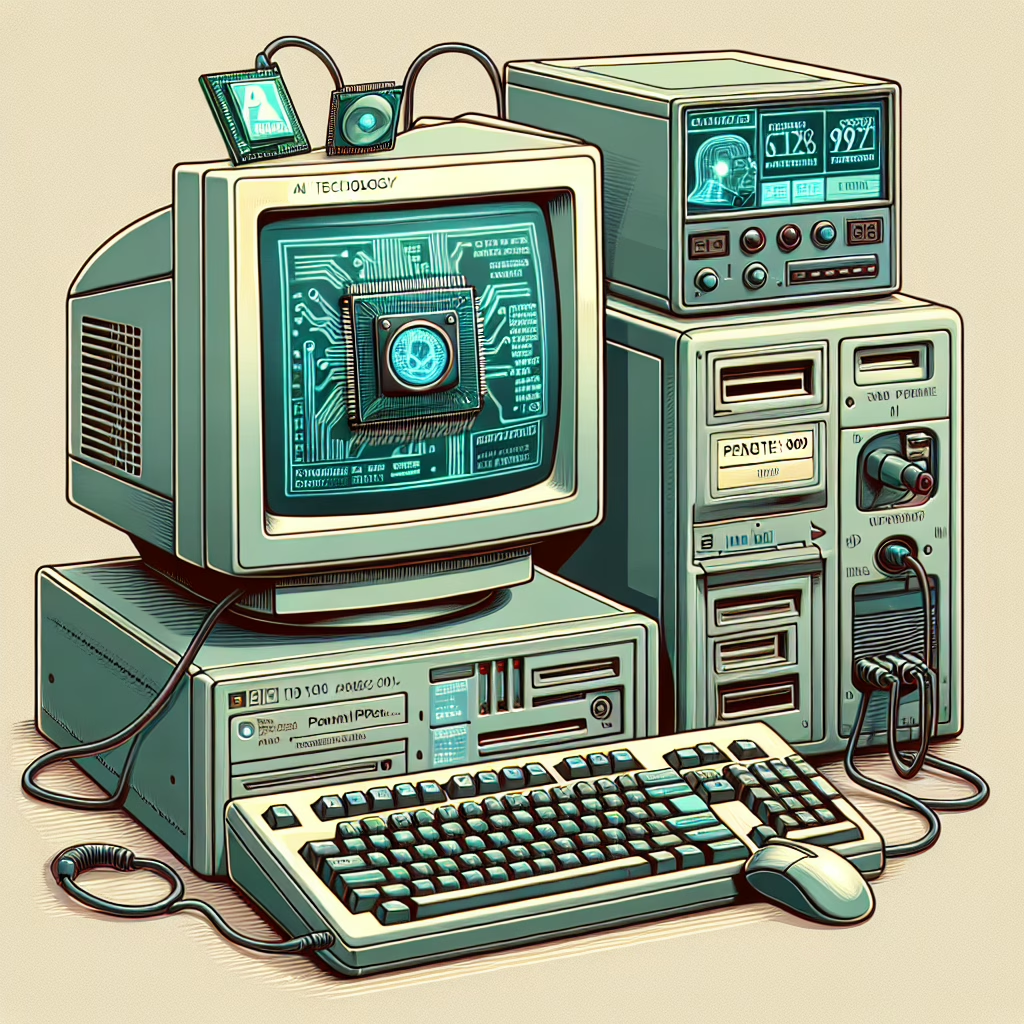Have you ever looked at your sleek, modern computer and thought, “This must be powered by a tiny army of squirrels on tiny treadmills?” Well, prepare to have your mind pleasantly twisted! A recent experiment revealed that a processor from the glorious year of 1997, paired with a mere 128 MB of RAM, can successfully run a modern AI. Yes, you read that correctly—a relic from the past can hold its own in the present!
The Marvelous World of Minimalism: A Nod to 1997
In an age where tech companies seem to think we need more processing power than NASA had for the moon landing, one brave soul decided to challenge this notion. Using a vintage Intel Pentium II processor, which has about as much power as a light bulb, this experiment proves that maybe less truly is more. With just 128 MB of RAM, this setup managed to run a sophisticated AI model without breaking a sweat.
Imagine showing up at a tech convention with this setup! You’d be the talk of the town: “Look at me! I’m running AI on what your grandmother might have used for solitaire!” This delightful juxtaposition serves as both a reminder and a revelation about our tech dependency.
Why This Matters: The Implications of Running Modern AI on Old Hardware
So why should we care about someone dusting off their old Pentium II? Well, aside from the sheer joy of nostalgia, it raises interesting questions about resource efficiency and sustainability in our tech-driven world. If we can run modern AI algorithms on hardware that was state-of-the-art when grunge was still popular, imagine the possibilities!
This experiment doesn’t just show off some party tricks; it offers practical insights into how we might streamline our current systems. With rising concerns over energy consumption and electronic waste, using older hardware could be a way to reduce our carbon footprint while still enjoying advanced technology. Not only does it promote sustainability, but it also opens up conversations about repurposing existing resources instead of constantly seeking newer, more advanced technology.
The Technical Side: How Was This Possible?
You may wonder how on Earth—or Mars—this was accomplished. The key lies in optimizing the software and minimizing unnecessary processes. The creator of this experiment used lightweight versions of necessary software components and stripped down any non-essential features. This method allowed the old hardware to perform tasks that would usually choke under pressure.
The beauty lies in clever engineering and smart coding. It’s like squeezing an extra slice of pizza out of a single pie—who wouldn’t want that? By employing techniques such as model quantization (that’s fancy talk for making things smaller), the modern AI model was able to fit comfortably into the limited memory space without sacrificing much functionality. These principles of efficiency and minimalism could be applied across various sectors in technology.
A Future with Less: What’s Next?
This breakthrough invites us to rethink our approach to technology. Instead of constantly upgrading to the latest models—each more powerful than the last—could we find ways to make better use of what we already have? It’s almost like hoarding but with computers!
Imagine if tech companies took this lesson to heart! We might see new products designed for efficiency rather than just raw power. Instead of battling over who has the fastest processor or the most RAM, we could focus on innovation through creativity and efficiency. It’s possible that appealing to the nostalgic aspects of technology could also bridge gaps between generations in terms of understanding and appreciation.
This shift could lead us toward a future where less is more—not just in terms of hardware but also regarding energy consumption and environmental impact. Perhaps one day we’ll be able to power our smart homes with nothing but a couple of AA batteries and some clever coding!
Join the Conversation!
So there you have it! A journey through time, technology, and triumph over excessive bloatware. What are your thoughts on running modern AI on such vintage hardware? Do you think it’s time for us all to embrace minimalism in tech? Or do you believe that progress comes from constant upgrades? Share your thoughts below—we’d love to hear what you think!
A special thanks to Daily Galaxy for inspiring this article with their original post. You rock!
Furthermore, as we explore and experiment with technology rooted in the past, it’s clear that this approach blends nostalgia with innovation. The realms of AI and technology are vast and ever-evolving, and our understanding of efficiency may just shape what the future looks like.
In conclusion, technology is not about the newest model but about what we can achieve with what we have. Embrace this philosophy and discover how vintage computing not only sparks creativity but also challenges the status quo. We owe it to ourselves and to our planet to think differently about our technological journey.

